So, your post-production team is growing and so is your storage problem. Am I right? I’m guessing that’s why you’re here and you are in the right place to sort it out.
Up until this point you may have been using a combination of scenarios that range from using local desktop storage and swapping projects and media via external drives. You might have been using cloud storage to manage you team and projects but are now finding it cumbersome to maintain and slow to use. You may have even invested in a small NAS (Network Attached Storage) setup to give everyone on your team access to the same data but it’s either too slow to edit from or it’s not working out the way you intended?
Well, fear not, because I have two strategies that will transform the way you work as a team as well as your editing and storage problems.
The two routes are; individual external RAID enclosures for each workstation or a dedicated Gigabit/10G network with NAS configuration. There are merits to both and different prices associated with each route too. So let’s delve in to both and you can decide for yourself which suits your setup.
How do I know what I’m talking about? Head to the DigiProTips Experience and Background page to find out how I’ve built up my knowledge over a career spanning feature film, broadcast TV and digital content production.
Individual RAID Enclosures – For Teams of 2-3 Persons
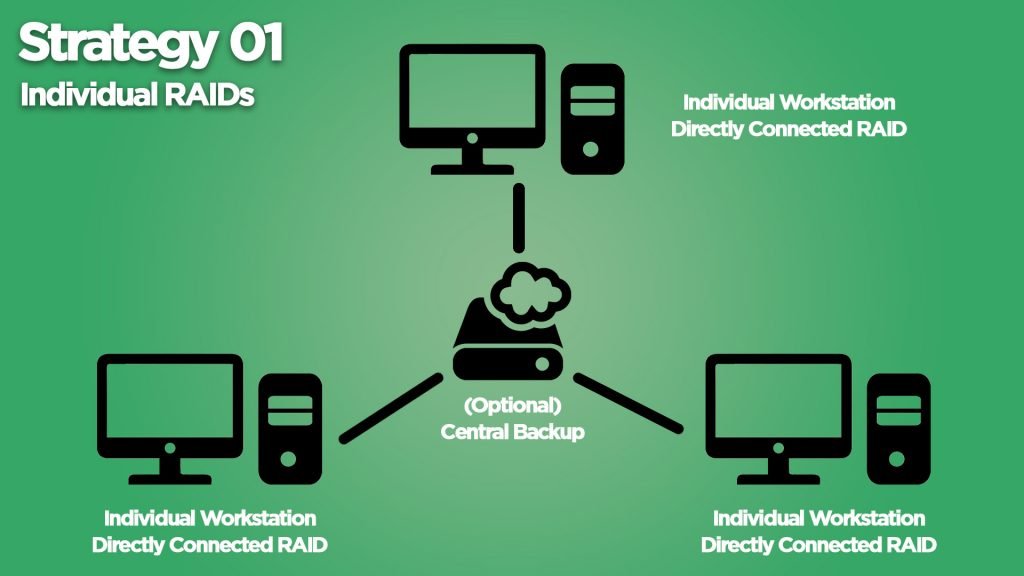
For small teams of up to 3 people I am going to run you quickly through the route of RAID storage arrays that are directly connected to each workstation.
First off, what does RAID stand for?
It stands for, “Redundant Array of Inexpensive Disks” or “Redundant Array of Independent Disks”.
What does that mean? Well, essentially, it means it’s a group of hard disks or SSDs working together as one unit.
And how does that benefit me over using external hard drives?
RAID setups are built for backup purposes, for storing media and data with fault and failure tolerance built in. In fact there are a number of different RAID configurations (0, 1, 5, 6 & 10). Each has its own purpose and way of securely storing your data should the worst happen.
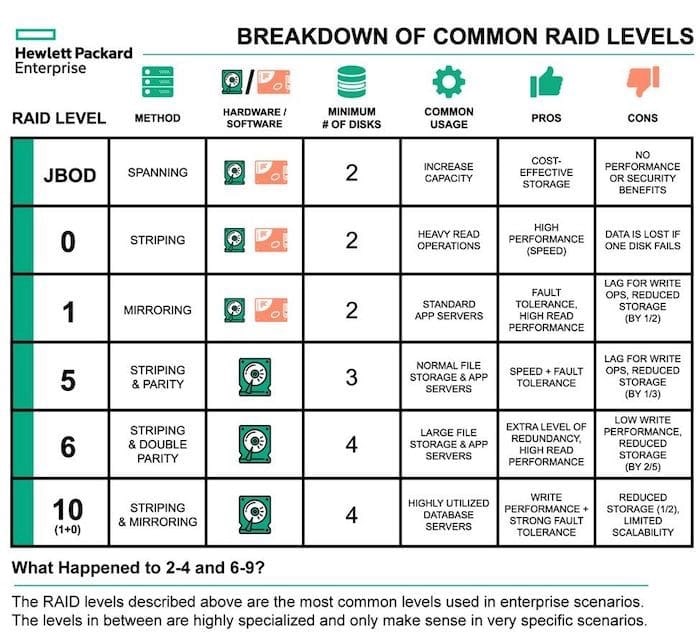
Why use personal RAID boxes on each workstation?
The reason to go this route is for speed.
If your team work on separate projects but the workstations are setup for hot-desking then this will work perfectly. Having directly attached storage to each workstation will speed up your editing workflow considerably over using USB 3 hard drives, cloud storage or slow network connected storage.
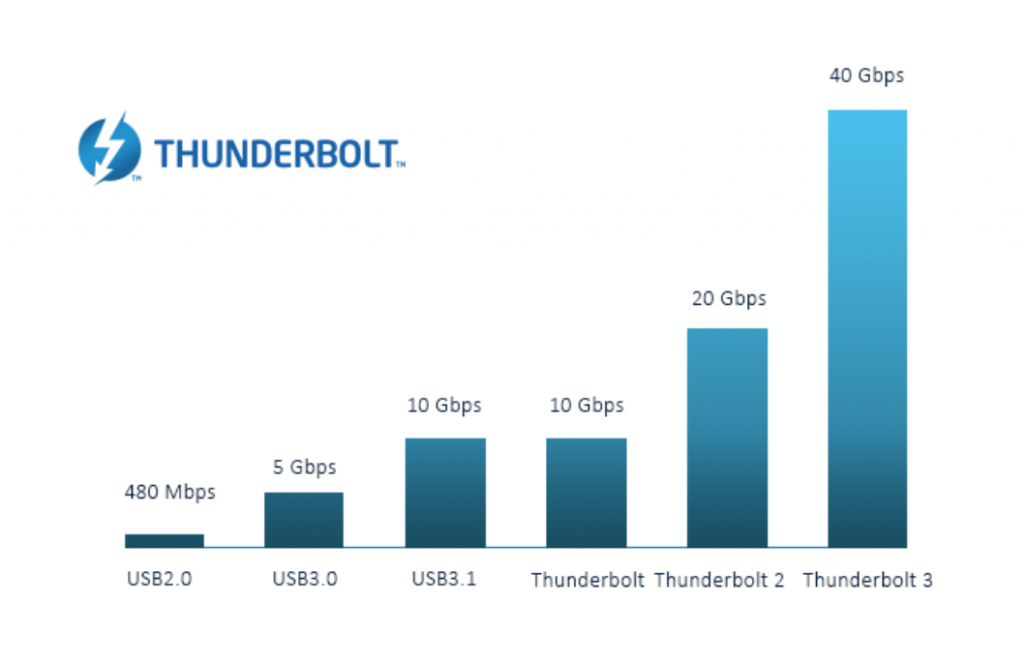
When using Thunderbolt 3 connected RAID storage boxes can achieve read/write speeds of up to 40Gbps! That is 4 times as fast as a USB 3.1 drive with speeds of only 10Gbps.
Having editors connected to storage with speeds as fast as this means that they can be working directly from 4K media without having to use proxies (as long as the hardware can cope with it). That is already a considerable saving on time and resources, meaning you can have more time to be creative with the edit or get it out the door to the client faster.
Note. To get the best speeds possible always ensure you are using the correct cables from certified brands/stockists.
What about sharing media and projects?
The individual RAID setup does come with a hinderance… In that accessing data on another RAID enclosure at another workstation is cumbersome and restricted by the speed of the network you are connected to and the PC setup you have, be that Windows, Mac or Linux.
You can set up your workstations to have access to each others RAIDs but it will take a bit of trial and error setting them as shared folders on your local network. You will also need to make sure your editors are not trying to edit from other users RAIDs at another workstation or transfer extremely large amounts of data as this will slow the workflow down considerably.
This setup works best when you have a post-production team who work on separate projects rather than shared projects or Assistants creating draft timelines for Seniors to then take over at another workstation.
As long as each editor is working on a separate edit with their own media then this setup will work for you and it will work fast!
What sort of kit and price are we looking at?
The best in class that I have personally used (this was the way my team was setup when working in feature film VFX editing) is with the Promise Pegasus32 R range.
They are well renowned for building quality, fast and reliable storage solutions that will stand the test of time and should not fail you.
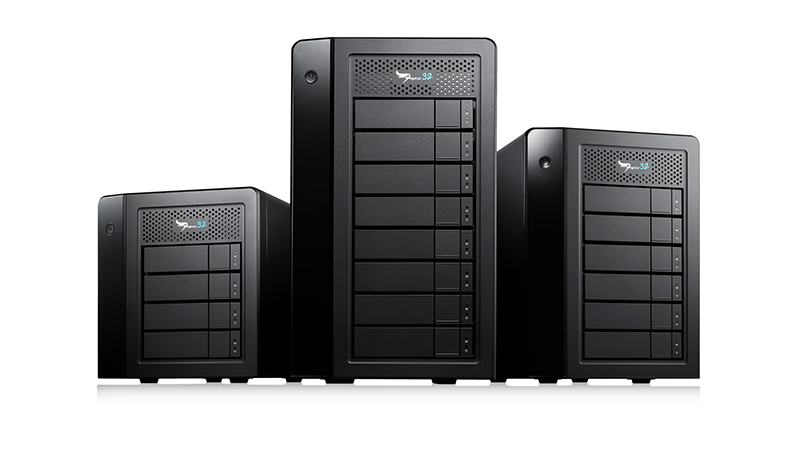
Depending on the size of your team and the media size that you need to store/work with, there are various options. All are connected via Thunderbolt 3 or USB 3.2.

For small teams or for working with small amounts of HD or 4K footage the Pegasus R4 4-Bay RAID enclosure supports RAID levels 0, 1, 5, 6 or 10 and can be configured with up to 64TB of storage. The enclosures are fairly lightweight (without disks installed) and do not take up a large area of desktop space either (dimensions in table above).
DISCLAIMER: This post may contain affiliate links. We make a small commission if you buy the products from these links (at no extra cost to you). As an Amazon Associate, I earn from qualifying purchases. But we only recommend products we would use ourselves. For more information, click here to see our disclosures.
The R4 with 12TB of storage already installed is currently available on Amazon for $1,000.

If you are working with larger files or media sizes then the next level up is the R6, which is a 6-bay enclosure configurable up to 96TB and is slightly larger and heavier than the R4.
It is currently available with 24TB pre-installed on Amazon for under $3,000.
Once we start getting above the R6 then in my opinion your money is better off being spent on the second option of the two I have for you below.
10GbE Network Attached Storage – For Teams 3+
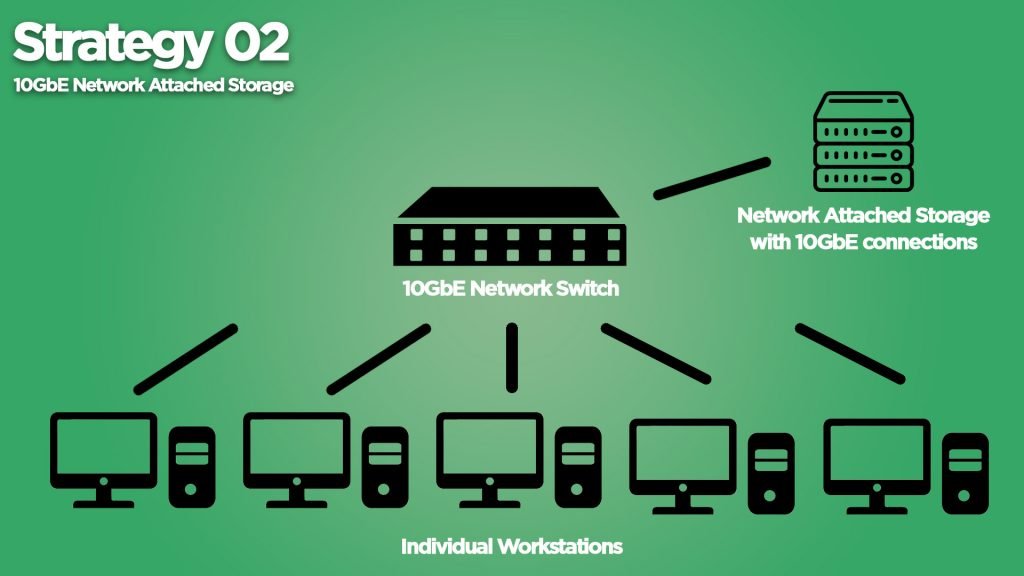
Once you get above 3 people in your team and you are working with mainly 4K footage on shared projects you really need to be looking at network attached storage enclosures.
If you are going beyond this then you might need to think even bigger and look a combination or individual RAID enclosures backed up to a SAN (Storage Area Network) or working from a very large, dedicated SAN served via fibre optics. For now though, let’s look at NAS and how it can best serve you.
NAS boxes have been around for a very long time now and come in all shapes and sizes. It can be quite hard to choose between them all and what they can do.
Some NASs are designed for small home or office backups. Some act as media servers for watching content. Some act as surveillance storage systems and some act as great video editing storage platforms, which is exactly what we need.
How do they work?
Network Attached Storage enclosures work roughly the same as the individual RAID enclosure does, except that it can house many more disks, it has it’s own computer system inside with it’s own operating system (well, many do but some don’t and are controlled via command line but we aren’t looking at those today) and it is one box connected to your local area network that any user can access (though you can restrict access to certain shared folders or by user).
For our purposes we need a NAS enclosure that can handle multiple users accessing it at any one time, reading and writing 4K footage in real time and working without hinderance on a local network.
The latter part of that statement means that we don’t just need the enclosure for this setup, we also need the correct networking equipment and cabling to match it. Do not fear though, this is not as hard as it may seem, though it can be costly. However, the end result is worth it and will last you for years to come.
Networking Setup
To enable us to edit from a NAS in 4K with multiple users we need to really be working from a 10Gigabit network.
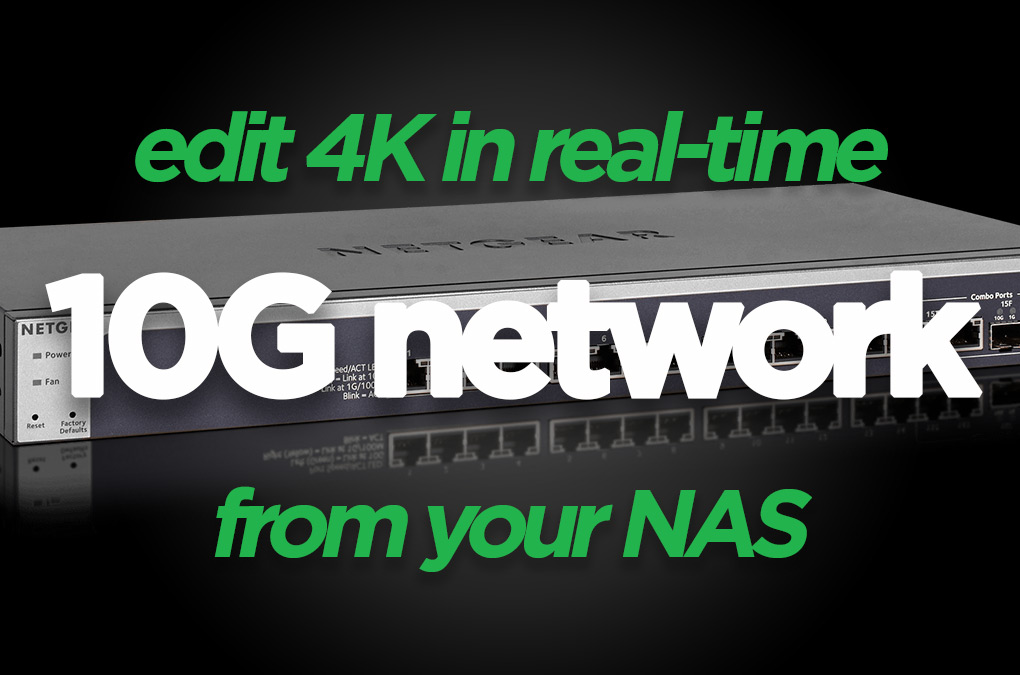
4K footage will require bandwidth of anywhere between 100-200Mbps. If you have 5 users all pulling that amount of bandwidth per workstation then you are going to need at least 500-1000Mbps on your network. A gigabit network just would not be able to handle that, even with bonded connections to a switch from the NAS.
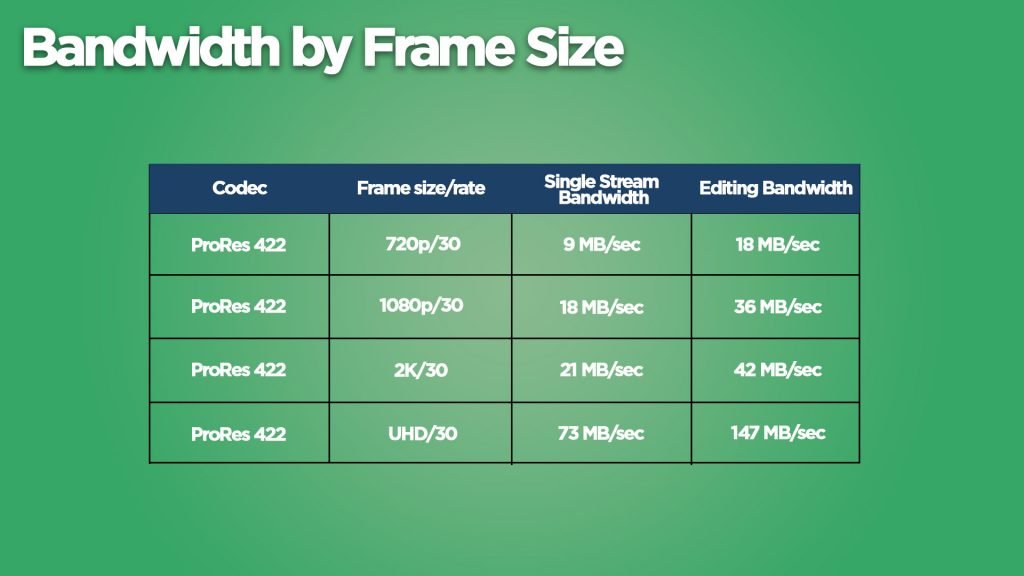
How I have set up my infrastructure before, for various teams that I’ve managed, is to have as big a 10Gigabit switch as you can afford (aside from the budget available for the NAS itself) that can give you room to grow in numbers in the future. You need a switch with at least enough ports for one each for your editors workstations, two for the NAS (which will be bonded together to make a 20Gbps connection) and one for your internet connection to your router or gateway. So, for a 5 man team that is at least 8 ports.
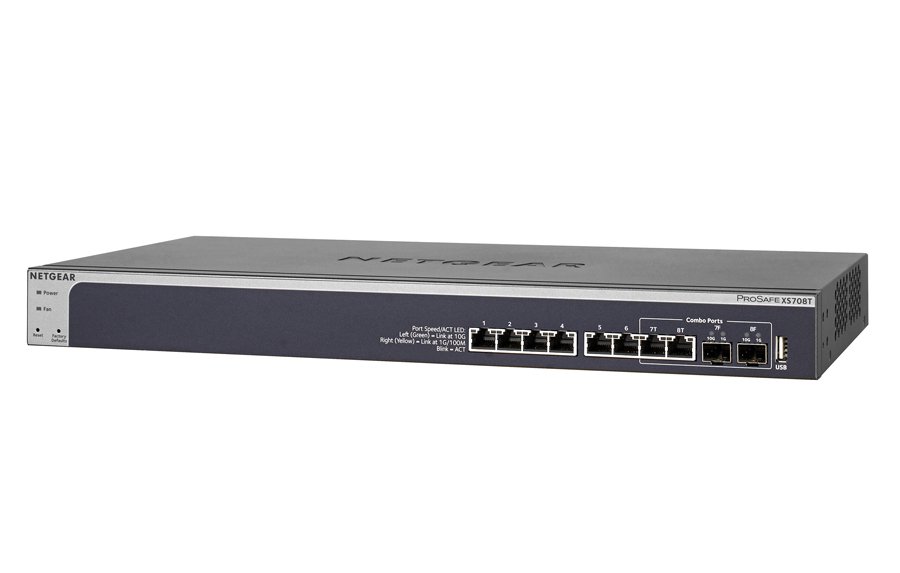
A suggestion for this size would be the Netgear Smart Managed 8 port 10G rackmount-able switch (the switch and NAS are rackmounted in these setups so make sure there is room in your comms cabinet or purchase one to house them). This switch uses RJ45 ethernet style cabling so it will work with existing, easy to use ethernet cables.
It is available on Amazon for $544.99.
You then need to ensure you have the bandwidth within your cabling. So upgrade your ethernet cables to CAT6.a or CAT7 if you can. CAT6 may just about work but it will be sub-optimal and CAT5.e simply doesn’t have the bandwidth we need.

One last thing before we move on to the NAS options, you also need to ensure you PCs can handle 10Gigabit connections. The newer Mac Pro lineups can, such as the iMac Pro and Mac Pro but older versions can’t. However, if you have Thunderbolt 2 and above you can convert those connections to 10G connections with the simple QNAP Thunderbolt to 10G adapter.
Let’s Talk NAS
So, we know what NASs are. We know what we need to do to connect them but how can they perform better than individual RAID enclosures?
NASs are essentially small computers with an absolute tonne of storage and networking ability. That means they are the perfect utility to do what we need… Move large amounts of data around our network at fast speeds and in a controlled way without failure.
The advantages of NAS setups do not stop there. With NAS boxes from brands such as Synology or QNAP you can setup multiple users that can be assigned to groups and permissions handed to each group or user. That means you can then restrict access to certain areas of your storage for junior to senior level positions; therefore ensuring only the data that needs to be seen by certain people is able to be accessed.
NASs such as Synology and QNAP also come with their own operating systems that have a plethora of applications that can run on them. These range from email and web hosting to encryption, backup and security applications.
Not only that but these types of NAS enclosures can host VPN servers and be able to be accessed remotely. So, if your editor is in the field and needs a file urgently or on the flipside, has a file you want from them urgently, the server can be accessed remotely to upload or download that file.
Let’s Talk Speed
As mentioned, we need speeds of up to 200Mbps to work with 4K footage in realtime. That means we need a NAS capable of outputting high bandwidth to the network. Luckily there are now NAS enclosures that come with 10Gigabit network cards in them and some that come with two, which can be bonded together to create a 20Gbps connection. That means you could effectively have 10 editors all working on 4K footage at the same time directly from the NAS over that connection. The only thing that would be slowing you down is the type of disk you have in the NAS, the CPU and your workstation hardware.
With speed of bandwidth now not an issue on the NAS or network side of things we just need to decide which NAS to go for.
NAS Options
I have worked with Synology and QNAP NAS enclosures and find them both to be a reliable and pleasant experience.
We want to go with rackmounted options whichever way we decide to go as these are the type of enclosures that tend to have the most power under the hood.
Synology
Synology are seen as the easier to use of two brands. Their OS is very stripped back and user-friendly but it does give you slightly less user configuration options than the QNAP OS. However, it is still more than you should need for this operation.
The rackmounted Synology RS3617xs features a 64bit Intel Xeon D-1531 processor, comes with 8GB of DDR4 ECC UDIMM RAM that is configurable up to 16GBs, has 12 bays with the ability to hold up to 192TB of storage space (16TB drives x 12), can take SSD or HDD and has two RJ45 10GbE ports and 4 RJ45 1GbE ports (ability to bond upto 24Gbps connection).
This enclosure should give you all the computational, network and storage power you need for up to about 10 users. It’s currently available on Amazon for $4,728.69.

The enclosures come diskless and you buy as many hard disks as you need. For security against failure I recommend the IronWolf disks by Seagate, which are made specifically to be used in NASs. The RED drives by WD are also great for NAS purposes.
The 10TB IronWolf disk is currently on offer at Amazon for $265 from $282. Which if you are buying 10 disks is a saving of $170.
If you are thinking of going down the SSD route then that will end up being very expensive indeed. As one 1TB IronWolf SSD drive is $243.90. SSDs are much more use as cache disks in our next option, the QNAP TS-h1283XU-RP.
QNAP
The QNAP TS-h1283XU-RP is the same form factor of the Synology above and has the same features in terms of hardware apart from a few differences.
The computational power of this enclosure utilises the Intel® Xeon® E-2236 6-core/12-thread 3.4 GHz processor and be configured with up to 32 GB UDIMM DDR4 ECC RAM. The QNAP also has the ability to use some of the disk bays as SSD Caches.
What does an SSD cache do? Well, an SSD cache could actually give a significant boost to your editing workflow if your editors use some of the same media/data over and over again. The QNAP will place your most frequently accessed files in the SSD cache meaning that any workstation using those files will have much faster read and write speeds than from the rest of the NAS. The SSD cache then also allows the QNAP OS to put the most infrequently accessed data into the HDDs which have slower access speeds and can act as a sort of cold storage for that media.
As mentioned above, the user experience on the QNAP is slightly different from the Synology, with far more software features and under-the-hood changes that you can make. The QNAP is therefore suited to someone with previous experiences with NAS setups.
The QNAP TS-h1283XU-RP is currently available on Amazon for less than the Synology at $4,204.18.
Conclusion
So there you have the two best options (in my opinion) to expand your post-production team’s storage and editing workflow capabilities.
Whichever route you decide to take, it is always worth remembering in the world of networking that you absolutely, ‘get what you pay for’. Substandard cabling, HDDs, network switches or pretty much any component in the infrastructure could critically slow your experience down and result in disk failure or loss of data on a workstation through drop outs.
If I were to give any advice for growing teams I would say look at the Network Attached Storage route, if your budget will allow it. It will give you the most future-proofed setup in terms of technology advances and team growth in terms of numbers.
Let me know at info@digiprotips.com which way you decide to go and how you find it has helped your editing workflow to ‘Work Smarter, Not Harder’.
DigiProTips
For more DigiProTips content check out our In-Depth Guide to NDI and how it could transfer your live workflow:
Or our post on the top three lens combination to Up Your Game as a Videographer this year:

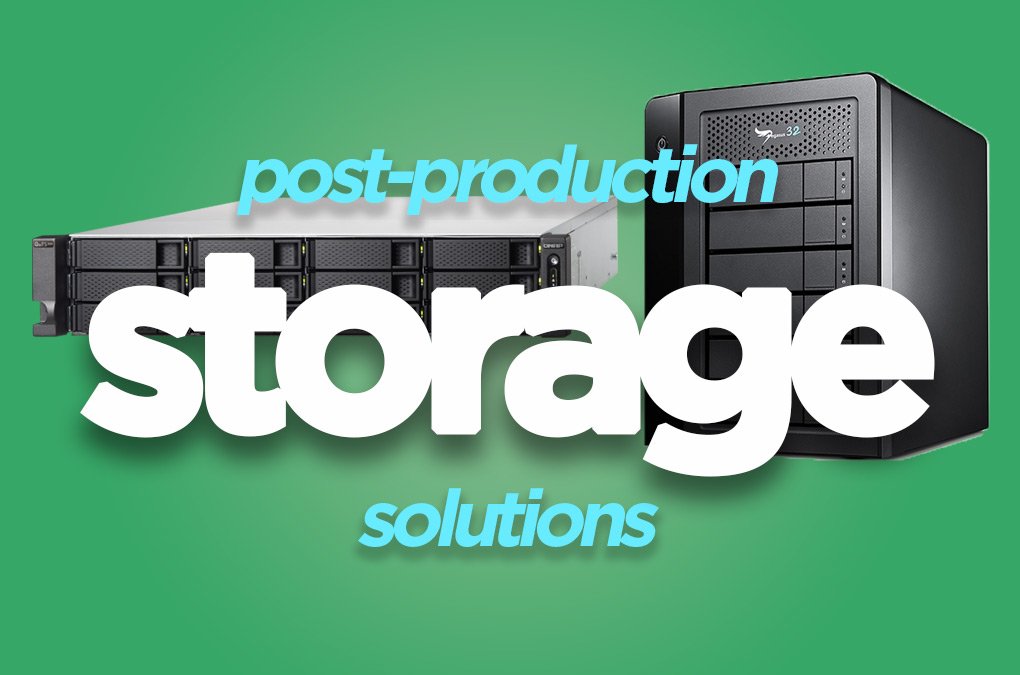


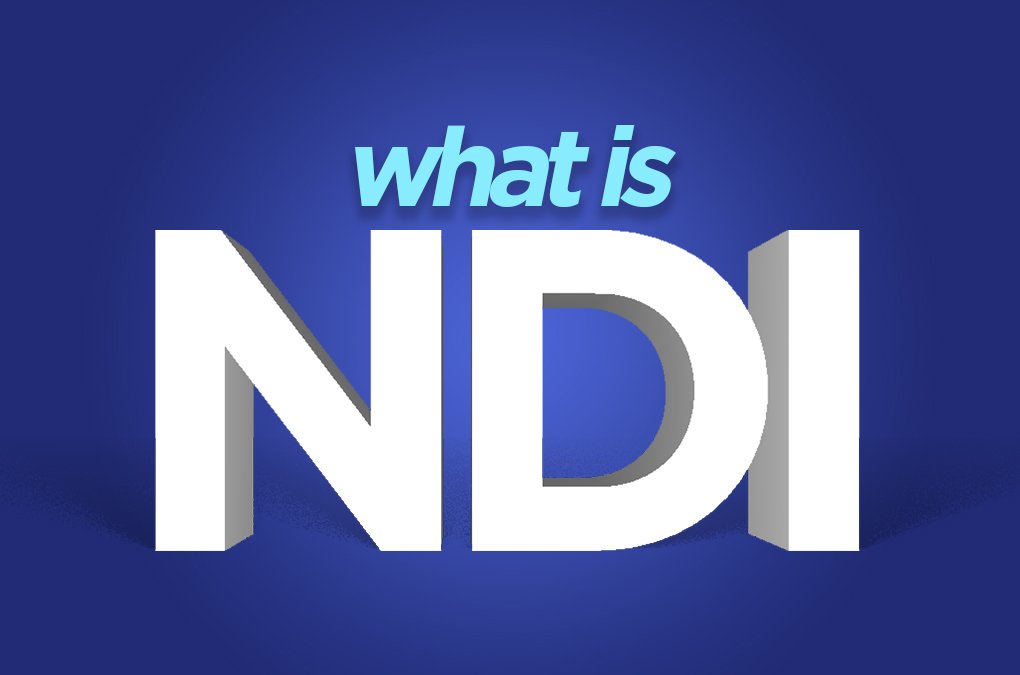


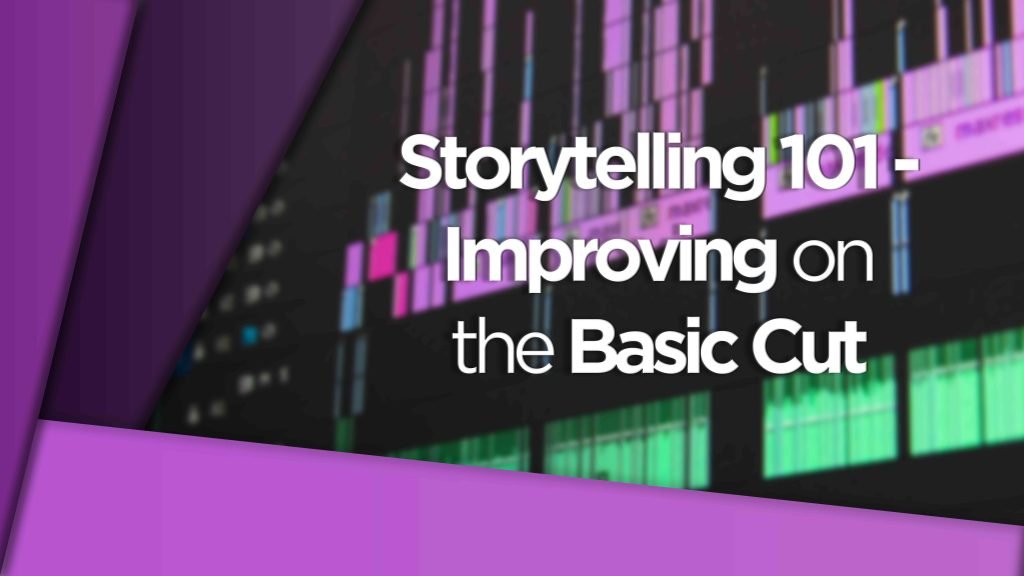
Pingback: Which is the Best Synology NAS for Improving Your Video Editing Storage Workflow -